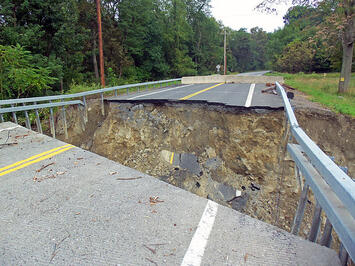
My latest column is now online at Governing and is about >how our infrastructure problem is in large part age related. It hits on themes I’ve talked about before, but since little ever changes in the American infrastructure debate, we always seem to end up repeating ourselves a bit. Here’s an excerpt:
Our endless debates over infrastructure result in part from our place toward the end of the maturity curve for development. Lots of Americans have China envy. We see their gleaming cities, their expansive new subway systems, their ultra-smooth high-speed rail, and wonder why we can’t have that.
What people forget is that during our rising era of industrialization and urbanization, we did have that. We were the China of that age. We built massive electricity infrastructure, water and sewage works, trains and subways. Then we added a world-class freeway system and airport network.
China’s infrastructure building spree is part of its rapid urbanization and industrialization. Because that has happened recently, Chinese infrastructure is state of today’s art. We, by contrast, have an infrastructure system largely built for an era that is now getting old. Many of our water and sewer lines haven’t been upgraded since they were installed 75 or more years ago.
Our challenges are more complex because they involve rebuilding, not building. It’s the same as suburban greenfield development versus urban redevelopment. The former is simply easier. Building new infrastructure — a new bridge or a new subway line — is also much sexier politically than replacing the deck on an existing bridge or updating obsolete rail signals. Decades down the road, when the Chinese find themselves sitting on a pile of aging, obsolete infrastructure, they will face many of the same challenges we do.
Read the rest at AaronRenn.
Aaron M. Renn is an opinion-leading urban analyst, consultant, speaker and writer on a mission to help America’s cities and people thrive and find real success in the 21st century. He focuses on urban, economic development and infrastructure policy in the greater American Midwest. He also regularly contributes to and is cited by national and global media outlets, and his work has appeared in many publications, including the The Guardian, The New York Times and The Washington Post.
Photo credit: Daniel Case via Wikimedia under CC 3.0 License.












